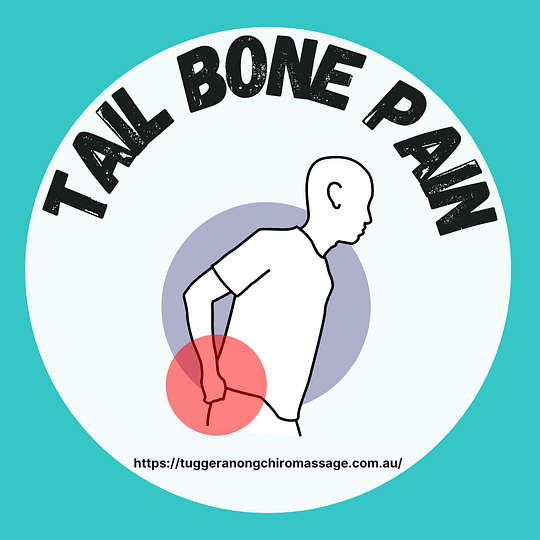
Coccyndynia (also known as tailbone pain) can appear after trauma to the tailbone, after prolonged sitting on an upadded seat of after a long bikeride. Sometimes it happens without causes and tends to worsen when sitting.
What is Coccydynia?
Coccydynia, also known as tailbone pain, is discomfort or pain in the area of the coccyx, the small triangular bone at the base of your spinal column. This condition can make sitting and leaning back extremely uncomfortable. It’s more common in women than in men, and can be caused by a variety of factors, including trauma, childbirth, repetitive strain, or sometimes the cause is unknown.
The Importance of Coccydynia Assessment
An accurate diagnosis of coccydynia is crucial for effective treatment. Your chiropractor will perform a thorough assessment which includes a detailed medical history, a physical examination, and possibly diagnostic imaging such as X-rays or MRI. This assessment will help the chiropractor understand the underlying cause of your pain, whether it’s an injury, structural irregularities, or other issues.
During the physical examination, your chiropractor will likely apply light pressure to the area to locate the exact spot of pain. You may also be asked to sit and move in different positions to help identify the actions that trigger your discomfort.
Treatment Options for Coccydynia
Once coccydynia is diagnosed, there are several treatment options available:
Chiropractic Care: Chiropractic treatments can be used for coccydynia. Your chiropractor will use a variety of techniques to help alleviate your pain, such as spinal adjustments, manual therapy, and specific exercises.
Education: Understanding your condition is a powerful tool in managing it. Your chiropractor will provide advice on how to manage your condition, including tips on posture, movements, and other lifestyle modifications that can help avoid triggers of pain.
Heat or Ice: Applying heat or ice to the area can help reduce inflammation and relieve pain.
Cushioning: Using a well-designed seat cushion can help relieve pressure on the coccyx when sitting. This will be discussed if it is appropriate. Ergonomic recommendations may be provided.
Medical Interventions: In some cases, your chiropractor may recommend working with your GP for additional treatments. This can include non-steroidal anti-inflammatory drugs (NSAIDs) to reduce inflammation and pain, or possibly injections if other treatments are ineffective.
Always remember, the most effective treatment depends on the underlying cause of your coccydynia.
Coccydynia FAQs
We’re Here to Help
Coccydynia can significantly affect your quality of life, but you don’t have to live with the pain. At our chiropractic center, we have the expertise to diagnose and treat coccydynia effectively. If you’re struggling with tailbone pain and need help, please don’t hesitate to get in touch with us.
We are experienced in the diagnosis and treatment of spinal pain. If you have doubts or concerns about your tail bone pain and are requiring assistance feel free to consult our practice on 6292 1092.